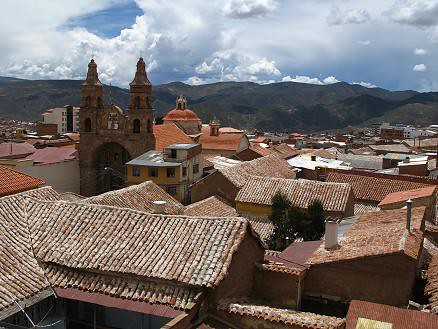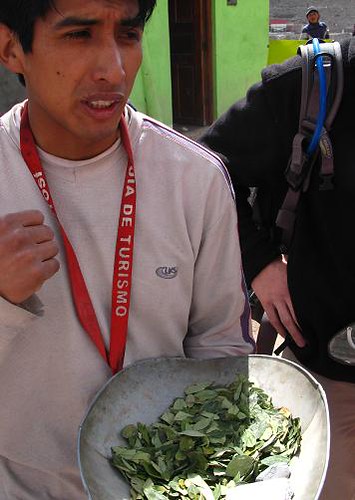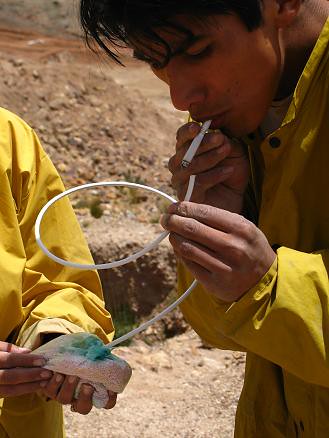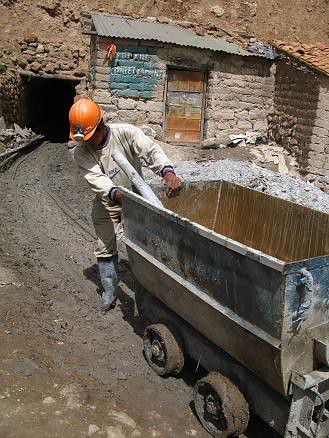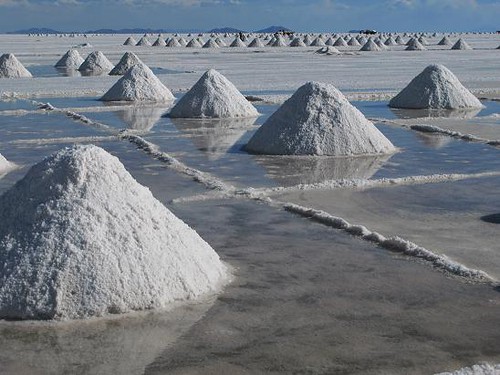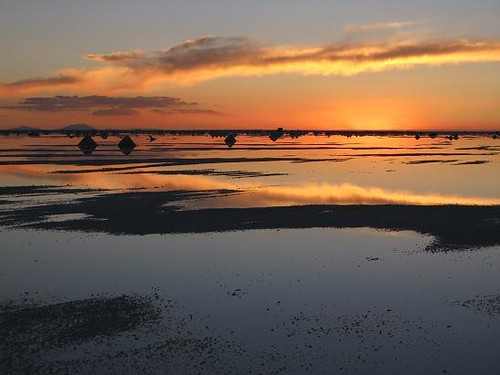Bolivian Mountain Guide Starts Crackling At 18,536 Feet
Sunday, March 25th, 2007In a refuge on Huayna Potosi mountain above La Paz, I turned in my sleeping bag, unable to doze off. Before bed time our mountain guides had made us a soup and some Coca mate, which is boiling water poured over Coca leaves, very popular in Bolivia and said to both give energy and help one sleep. As contradictory as this may seem, I had decided to give it a try.
We went to bed at 8pm, expecting to wake at midnight, as it is the best time to start a trek to the summit. We would dress, sip some hot chocolate, and take off into the dark. At least, that’s how it was supposed to work. But waking up means sleeping and my heart was pounding too hard from the elevation, the coca leaves, or maybe simply nerves, to let me rest.
I’ve climbed a mountain once before, but I was 10 years old and felt at home on its friendly slopes. With my dad I proudly reached the 11,000 foot summit just after dawn, getting to skip a day of 5th grade for it. But this time too many things had changed. I was in Bolivia, relatively out of shape, with a guide who only spoke Spanish on a mountain twice as high as my favorite volcano back home. Though Huayna Potosi is known as an easy 6,000 meter mountain, 30 percent of the people who try don’t make it to the top. Altitude sickness has some of them spinning in their heads and vomiting, others just have bad luck.
These facts mingled in my head as I ordered myself to sleep but then a familiar rumbling sound shook my belly and my already stressed heart took a leap. It sounded like a glacier cracking apart. They do that, these South American glaciers. They rumble and echo and crash. But then it happened again. The wind picked up, pushing against the side of the refuge, and a flash filled the room. Sitting up to find out what the others thought of this, I saw but sleeping lumps on the floor. No one else seemed to notice the lightning storm and, with half an hour left before midnight, I tried to ignore it, myself.
Before long, clinking pots and breakfast sounds rustled the room. Theo and Porfis, our friendly guides, were preparing tea and organizing their ropes and harnesses as they whistled Bolivian tunes in the room below. Sleepily, we rose, covered ourselves in layers of fleece and snow gear up to the nose. We had our hot chocolate as planned, and then headed out the door into the night, wind and snow pelting our faces, unable to see anything but round white headlamp light making circles on the snow. A slow rumble in the valley shook my senses but the guides didn’t seem to mind.
Crampons creaking in the snow, cord dragging between Porfis’ harness and mine, Cyril taking up the rear, ever so slowly we stepped up the mountain and away from the warm refuge. Left foot, pause. Right foot, pause. Making sure not to slip. Tension in the line. There was nothing but darkness to contrast with the white snow flakes flying in front of my head lamp beam.
The higher we climbed, the harder I breathed. Through the light fleece of my ski mask, I couldn’t suck in oxygen fast enough. We were rouding 5,200 meters when I ripped it off of my face and wheezed, a sudden wave nausea rocking my belly. “What am I doing?” I thought. “Isn’t it good enough to travel in South America? Is a 6,000 meter mountain top really necessary?”
Just then Porfis turned around. “Do you hear that? It’s the storm.” He said, but there hadn’t been any thunder. “Hear the static?” I shook my head. “Come closer,” he said, and I leaned into his backpack, my ear hovering above some metal anchors he had strapped to the back. At first I thought he was talking about some sort of local legend. Hearing nothing but my breath and the wind, I smiled politely and shook my head again. But then he turned and I heard it. He was buzzing and crackling like one of those radiation detectors they use in Chernobyl. “Static,” he said, “Muy peligroso.” But he decided we’d keep on going for a while to catch up to the other amigos who had left before us and then we’d decide what to do.
Snow whirled around from every side, up into my hood and down my neck. As the valley kept rumbling below, so my belly turned over and over itself, threatening to spill its contents into the snow. But slowly, we kept trudging on. Left foot, pause. Right foot, pause. Thus we caught up to the amigos, who told us there was so much snow coming down that they couldn’t find the trail.
At 3am we reached 5,650 meters (18,536 feet) and had a good laugh. We were lost, the snow was getting thicker, I was about to throw up, my guide was buzzing and, with a hint of defeat in his voice, he decided it was time to turn back.
Around 8am we woke up warm in our sleeping bags to the sounds of clinking pots again and ran to peek out the windows at the mountain top. We had wanted to see the sun rise from 6,000 meters but our typical bad luck weather got us again. As it was, the sun rose as we slept and by 9am the mountain was gleaming white against a clear blue sky, stirring bitterness in the boys of the group. “Think of how the view would have been from up there!” They said, cranky and let-down.
Through the night, snow had layered the valleys and mountain tops white. I took my hot chocolate outside and reveled in the sun, took in the wispy clouds weaving in and out of the peaks and smiled. I couldn’t be let down by such a sight. And besides, making it to 18,536 feet in an electrical snow storm at midnight is pretty good, I think.
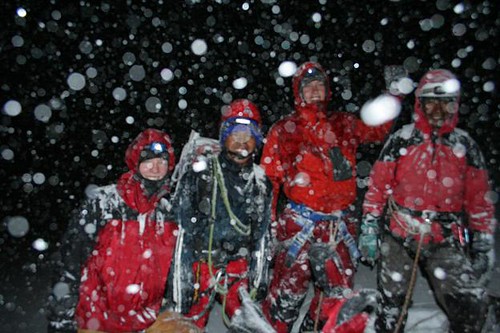
Just before turning back – we’re smiling because we’re thinking about our sleeping bags.

